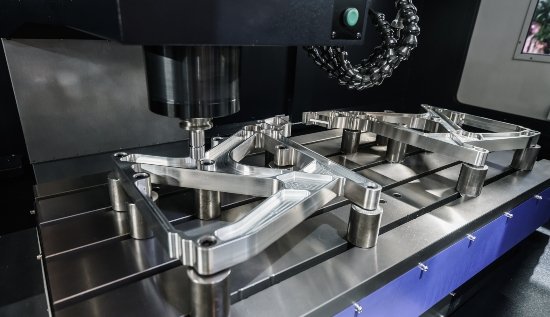
The Essential Guide To CNC Milling Machines
The Essential Guide To CNC Milling Machines
For those who may be a new entrant to the industry and would need a refresher, this article explains CNC Milling Machines, how they work, how they compare to CNC Lathes, and when to use such CNC machine tools. Article by Hwacheon.
Focused on milling – the process of machining using rotating tools to gradually remove material from a workpiece – CNC milling machines are a mainstay for factories around the world. These machine tools make use of a variety of cutting tools along one or more axes to remove material from a workpiece through mechanical means.
CNC milling machines are often used in a variety of manufacturing industries: from industries like aerospace, shipping, automobiles, and oil drilling/pumping and refining, to medical, FMC manufacturing, and precision engineering sectors.
Also called CNC Machining Centers, the more advanced CNC milling machines can operate along multiple-axis. These may be fitted with automatic tool changers, advanced machine coolant systems, pallet changers, and advanced software to improve the efficiency and accuracy of machining processes.
In this article, we will be looking at the many different aspects of a CNC milling machine/machining center.
What CNC Milling Machines Are
CNC milling machines are machine-operated cutting tools that are programmed and managed by computer numerical control (CNC) systems to accurately remove materials from a workpiece. The end result of the machining process is a specific part or product that is created using a computer aided design (CAD) software.
These machine tools are normally equipped with a main spindle and three-linear-axes to position or move the part to be machined. More advanced versions may have a 4th or 5th rotational axis to allow for more precise shapes of varying dimensions and sizes to be machined.
CNC milling machines normally employ a process of material cutting termed milling or machining – the milling process involves securing a piece of pre-shaped material (also known as the workpiece) to a fixture attached to a platform in the milling machine. A rapidly rotating tool (or a series of interchangeable tools) is then applied to the material to remove small chips of the material until the desired shape for the part is achieved.
Depending on the material used for the part, as well as the complexity of the machined part, varying axes, cutting head speeds, and feed rates may be applied.
Milling is normally used to machine parts that are not symmetrical from an axial perspective. These parts may have unique curvatures or surface contours, which may require a combination of drilling and tapping, grooves, slots, recesses, pockets and holes to work on them. They may also form parts of the tooling for other manufacturing processes – for example in the fabrication of 3D moulds.
Features of Advanced CNC Milling Machines
In the past, milling machines were manually operated. Operators had to use a combination of machines with different tools to machine a more complex part or product. Or they had to use various settings on one machine just to complete the job.
With the advancement of technology such as CNC and automatic tool changers (ATCs), greater efficiency, flexibility and speed can be achieved – even for more convoluted parts. The provision of digital readouts and measuring systems has also improved the accuracy of CNC machining processes.
To continue reading this article, head on over to our Ebook!
Check these articles out:
New Dimensions In Deep-Hole Drilling With Walter
Milling Cast and Steel Parts More Cost-Effectively
Five Ways To Enhance CNC Machine Manufacturing With The Cloud
Are Cheaper CNC Machine Tools More Cost Effective?
TRUMPF Opens New Smart Factory In Ditzingen
For other exclusive articles, visit www.equipment-news.com.
WANT MORE INSIDER NEWS? SUBSCRIBE TO OUR DIGITAL MAGAZINE NOW!
FOLLOW US ON: LinkedIn, Facebook, Twitter
